
How to Use Laser Green Light Module Diode: Examples, Pinouts, and Specs
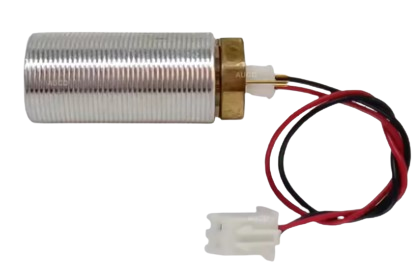
 Design with Laser Green Light Module Diode in Cirkit Designer
Design with Laser Green Light Module Diode in Cirkit DesignerIntroduction
The Laser Green Light Module Diode is a semiconductor device that emits green laser light when an electric current passes through it. This component is widely used in optical applications, laser pointers, and various display technologies due to its high brightness and precision. Its compact size and efficiency make it ideal for integration into a variety of electronic systems.
Common applications include:
- Laser pointers for presentations and educational purposes
- Optical communication systems
- Laser-based measurement and alignment tools
- Holographic and display technologies
- DIY electronics and robotics projects
Explore Projects Built with Laser Green Light Module Diode
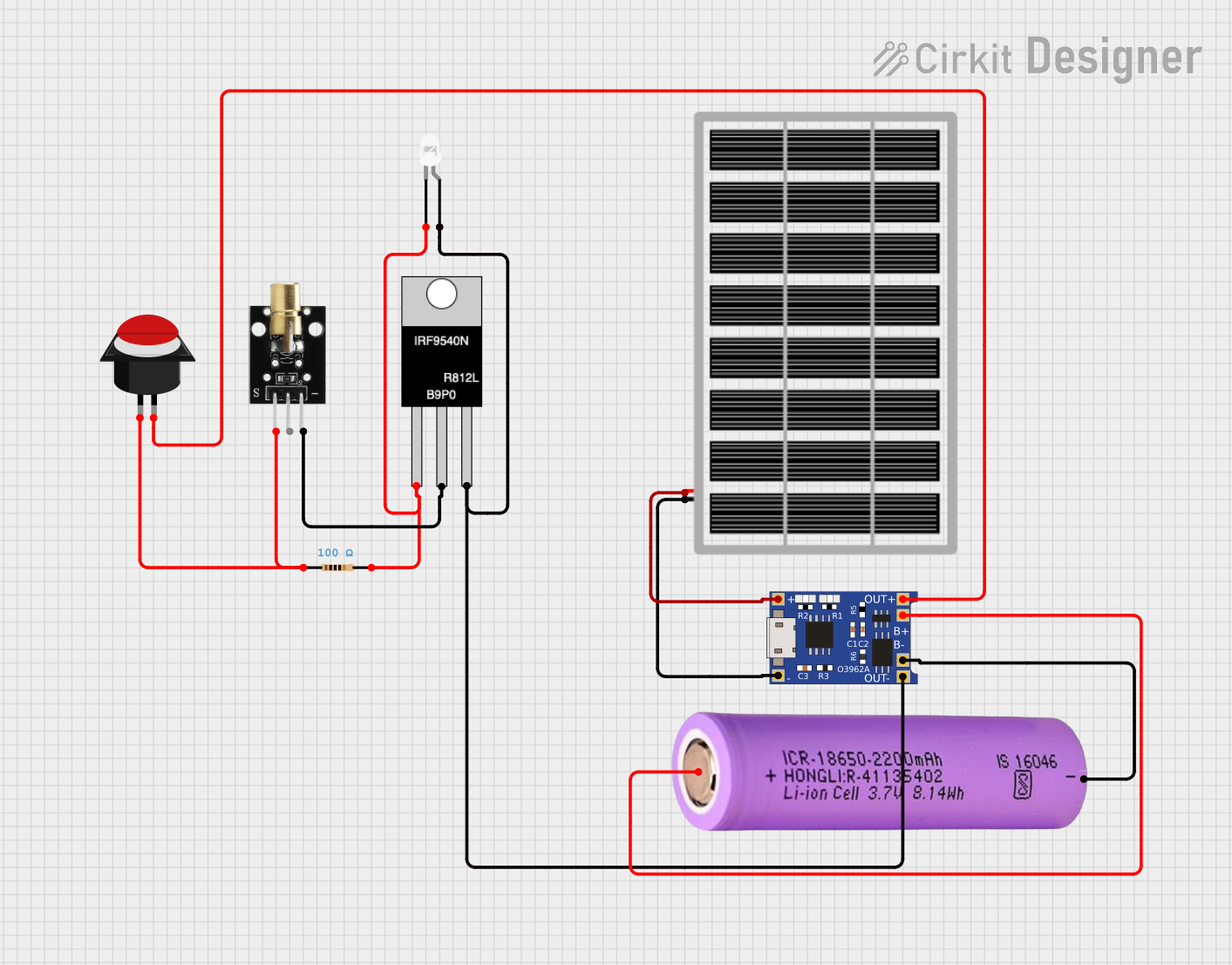
 Open Project in Cirkit Designer
Open Project in Cirkit Designer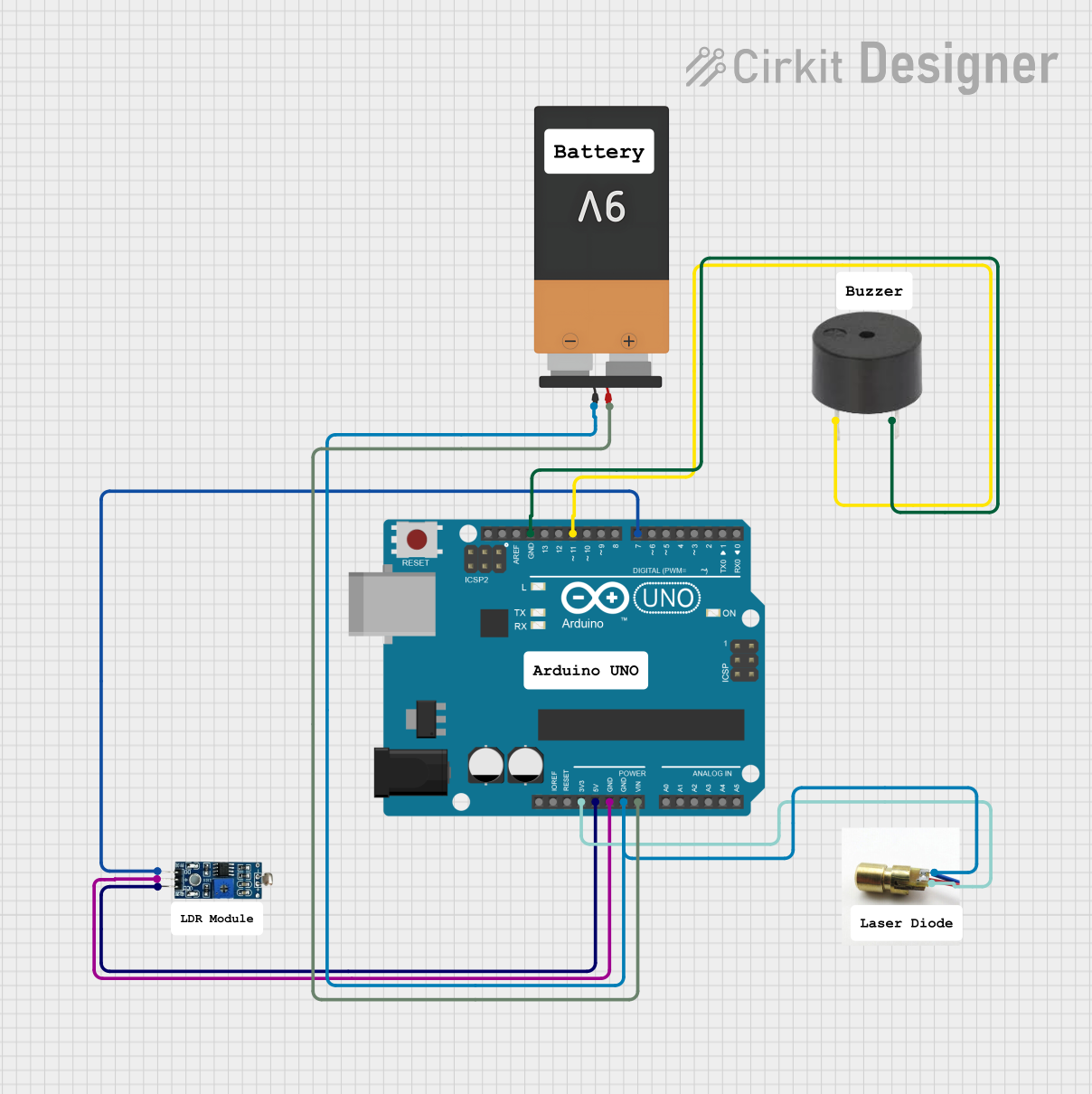
 Open Project in Cirkit Designer
Open Project in Cirkit Designer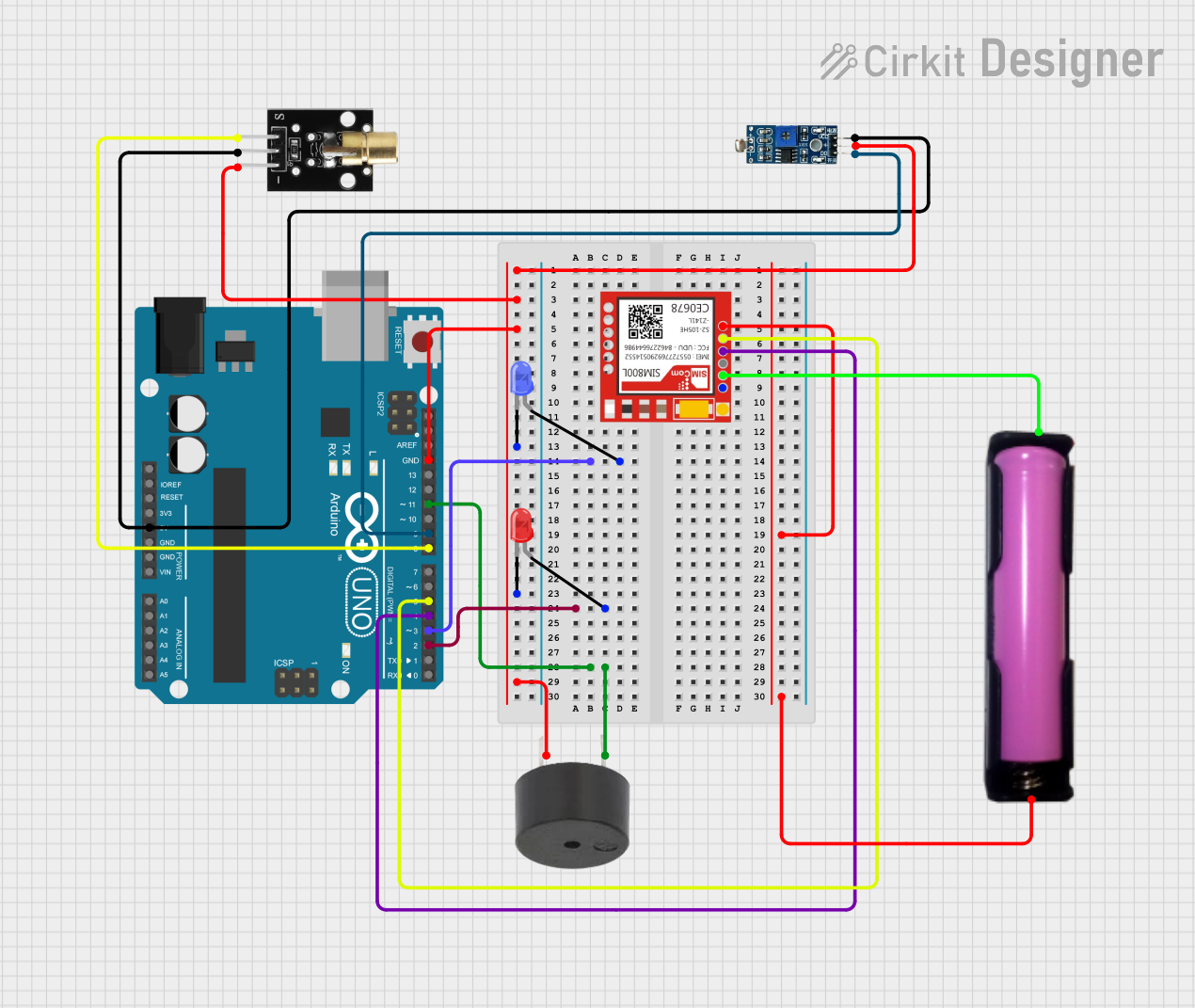
 Open Project in Cirkit Designer
Open Project in Cirkit Designer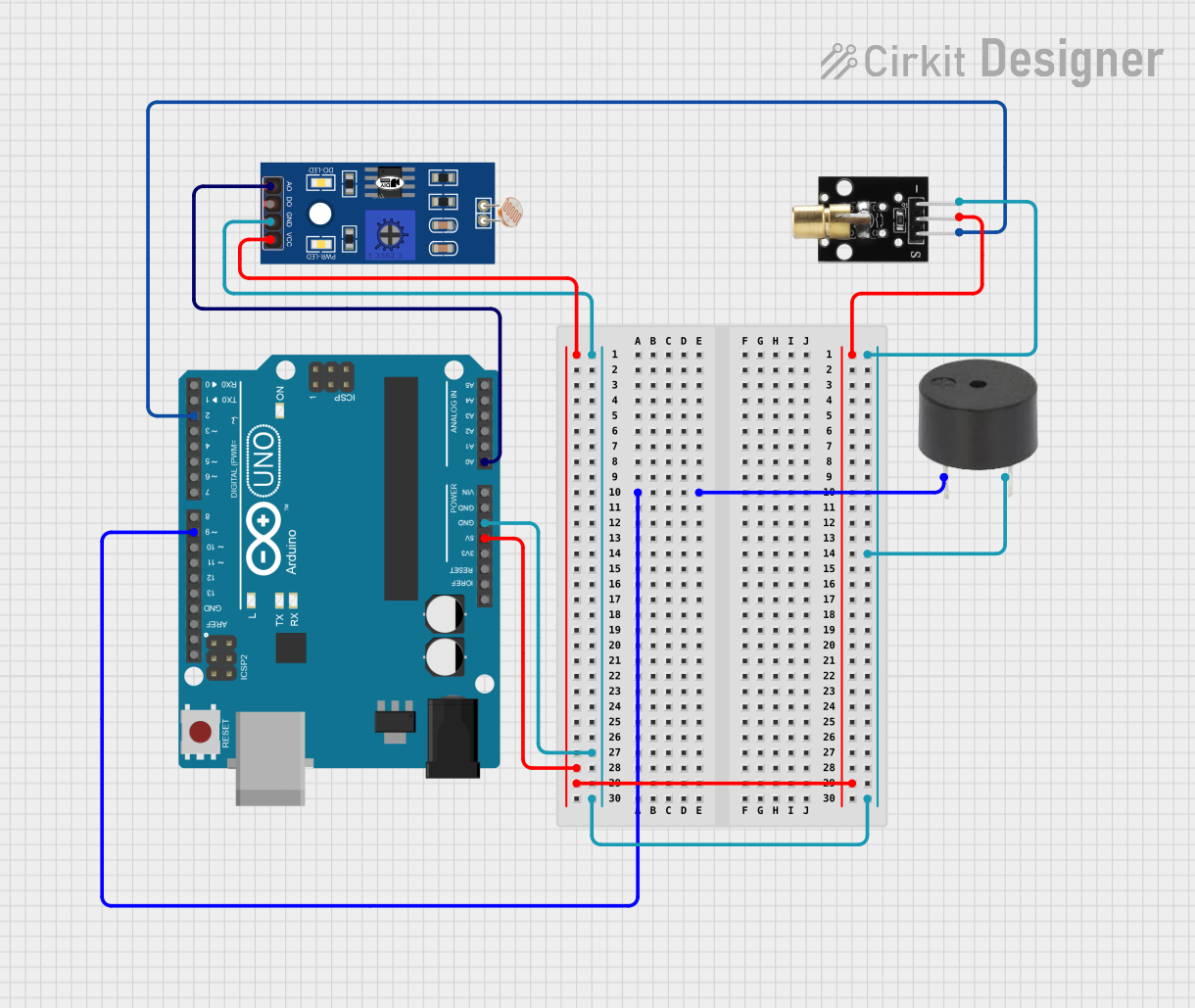
 Open Project in Cirkit Designer
Open Project in Cirkit DesignerExplore Projects Built with Laser Green Light Module Diode

 Open Project in Cirkit Designer
Open Project in Cirkit Designer
 Open Project in Cirkit Designer
Open Project in Cirkit Designer
 Open Project in Cirkit Designer
Open Project in Cirkit Designer
 Open Project in Cirkit Designer
Open Project in Cirkit DesignerTechnical Specifications
Below are the key technical details of the Laser Green Light Module Diode:
| Parameter | Value |
|---|---|
| Wavelength | 532 nm (green light) |
| Operating Voltage | 3V to 5V |
| Operating Current | 200 mA (typical) |
| Output Power | <5 mW (Class IIIa laser) |
| Beam Divergence | <1.5 mrad |
| Operating Temperature | -10°C to 40°C |
| Dimensions | 12 mm (diameter) x 45 mm (length) |
Pin Configuration and Descriptions
The Laser Green Light Module Diode typically has three pins or wires for connection:
| Pin/Wire | Description |
|---|---|
| VCC | Positive power supply (3V to 5V) |
| GND | Ground connection |
| TTL/Control | Optional input for modulation or on/off control |
Note: Some modules may only have two wires (VCC and GND) if they lack TTL modulation functionality.
Usage Instructions
How to Use the Component in a Circuit
- Power Supply: Connect the VCC pin to a stable DC power source (3V to 5V). Ensure the power supply can provide sufficient current (at least 200 mA).
- Ground Connection: Connect the GND pin to the ground of your circuit.
- TTL/Control Pin (if available): Use this pin to modulate the laser output. A HIGH signal (e.g., 5V) turns the laser ON, while a LOW signal (e.g., 0V) turns it OFF.
Example Circuit with Arduino UNO
Below is an example of how to connect and control the Laser Green Light Module Diode using an Arduino UNO:
Circuit Connections:
- Connect the VCC pin of the laser module to the 5V pin on the Arduino.
- Connect the GND pin of the laser module to the GND pin on the Arduino.
- If the module has a TTL/Control pin, connect it to a digital pin on the Arduino (e.g., pin 9).
Arduino Code:
// Laser Green Light Module Control with Arduino UNO
// This code turns the laser ON for 1 second and OFF for 1 second in a loop.
const int laserPin = 9; // TTL/Control pin connected to Arduino digital pin 9
void setup() {
pinMode(laserPin, OUTPUT); // Set the laser pin as an output
}
void loop() {
digitalWrite(laserPin, HIGH); // Turn the laser ON
delay(1000); // Wait for 1 second
digitalWrite(laserPin, LOW); // Turn the laser OFF
delay(1000); // Wait for 1 second
}
Important Considerations and Best Practices
- Eye Safety: Always avoid direct eye exposure to the laser beam. Use appropriate laser safety goggles if necessary.
- Heat Management: Prolonged use may cause the module to heat up. Ensure proper ventilation or use a heat sink if required.
- Power Supply: Use a regulated power supply to prevent voltage spikes that could damage the diode.
- Modulation: If using the TTL/Control pin, ensure the input signal does not exceed the module's voltage rating.
Troubleshooting and FAQs
Common Issues and Solutions
Laser Does Not Turn On:
- Check the power supply voltage and current. Ensure it meets the module's requirements.
- Verify all connections, especially VCC and GND.
- If using the TTL/Control pin, ensure it is receiving the correct signal.
Laser Output is Dim:
- Ensure the power supply is stable and not underpowered.
- Check for any obstructions in the laser's optical path.
- Verify that the operating temperature is within the specified range.
Module Overheats:
- Reduce the operating time or add a heat sink to dissipate heat.
- Ensure proper ventilation around the module.
Beam is Misaligned or Unstable:
- Check the mounting of the module to ensure it is secure.
- Avoid vibrations or shocks that could affect the alignment.
FAQs
Q: Can I power the laser module directly from a 9V battery?
A: No, the module is designed for a voltage range of 3V to 5V. Using a 9V battery without a voltage regulator may damage the diode.
Q: Is the laser safe for use in DIY projects?
A: Yes, but always follow laser safety guidelines. Avoid direct eye exposure and use the module responsibly.
Q: Can I use PWM to control the laser brightness?
A: Yes, if the module has a TTL/Control pin, you can use PWM signals to modulate the laser's intensity.
Q: What is the maximum distance the laser can project?
A: The effective range depends on environmental conditions and the module's output power. For a typical <5 mW module, the beam can be visible up to several hundred meters in low-light conditions.
By following this documentation, you can safely and effectively integrate the Laser Green Light Module Diode into your projects.